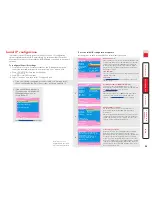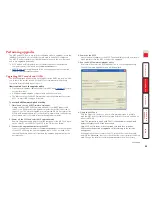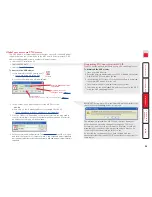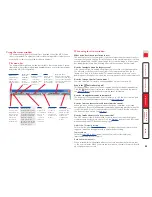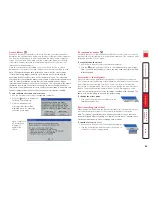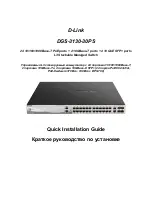
49
LINDY MC5
User Name:
Password:
Port 1 login
Esc-Scr Save
LINDY MC5
Computer
Port
Computer 1
01
Computer 2
02
Computer 3
03
Computer 4
04
Computer 5
05
Computer 6
06
Computer 7
07
Computer 8
08
User port 1
Status
ADMIN
SHARED USE
F1-More menus F3-Find
F2-Adj.Video
F4-Logout
This column shows
the MC5 address for
each computer. If you
wanted to select ports
using the hotkey
method, these are
addresses that you
would enter.
Default names for
each computer port
Your Login name
Link status of your
user port
Identification of
your user port
Enter your Login
name here
Selecting a computer
There are four main ways for local and remote users to select a specific
computer channel:
•
Using the front panel controls
(discussed below) – this is a straightforward
method, if the MC5 is nearby.
•
Using hotkeys
– this is a good method if you continually access a small
number of computers.
•
Using the on-screen menu
– this is the best method when there are many
connected computers.
•
Using mouse buttons
– this is a good method for cycling between a small
number of computers.
For all methods (if the
confirmation box option
is enabled), when the required
port is selected, a pop up message will be displayed to confirm the computer
name or number, and its status. Alternatively, an error message explaining why a
connection is not possible (press to cancel the latter type of message).
To avoid the ‘hall of mirrors’ effect
IMPORTANT: Never configure a system so that your viewer is viewing itself.
When controlling a host computer via the local user port or a remote user port,
if the host computer is networked it is possible to make the VNC viewer or a
browser to create a link back to itself via the global (IP) capabilities of the unit.
This will set up a ‘hall of mirrors’ effect, where the computer is viewing itself
into infinity.
While technically possible, the MC5-IP unit is not designed to withstand this
treatment and could sustain damage.
To select a computer using the front panel controls
Note: It is possible for the front panel controls to be limited to selecting only
the on screen menu or a blank screen. If this is the case please use a different
switching method or contact your system administrator for details.
1 Press the
USER
button until the adjacent numeric indicator displays the port
number to which you are connected.
2 Press the
COMPUTER
button until the adjacent numeric indicator shows the
required computer channel number.
Note: If security has been enabled then only computer channels to which
the current user port has permission will be displayed.
As well as the 24 standard computer ports, there are also two additional
special ports that appear after port 24:
This port provides no video signal so that a connected power saving
monitor will be prompted to enter into its power saving mode.
This port connects the current user port to the on-screen menu.
If the above login prompt is not displayed, you
are either already logged in to the MC5 unit, or
the security features have not been implemented.
In such cases see ‘To view this menu at any time’
below.
Local and remote user access
Local users (directly connected) and remote users (via a User Station) gain access
to the MC5 unit in exactly the same way.
Global users
, linking via a special
viewer, are handled in a different manner.
To gain access as a local or remote user:
1 From a local or remote keyboard, press any key to display the login prompt:
2 Enter your username and password. Providing you have the correct
permissions, the screen will display the main menu, showing you a list of
computers for which you have permission to access:
To view this menu at any time: Press and hold the hotkeys (usually
and
),
then press and finally release all three keys.
Note: The
and
keys when pressed in combination are called ‘hotkeys’
and they signal to the MC5 that you wish to control it, rather than the host
computer. However, if these particular hotkeys clash with another device or
program, then your administrator may change them to a different combination.
If the
combination fails to work, then please contact your system
administrator for details.


